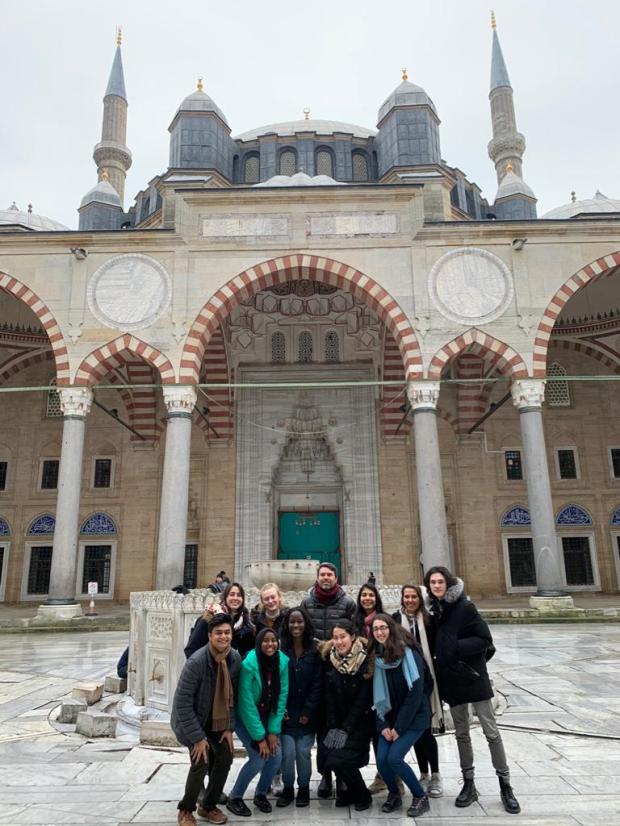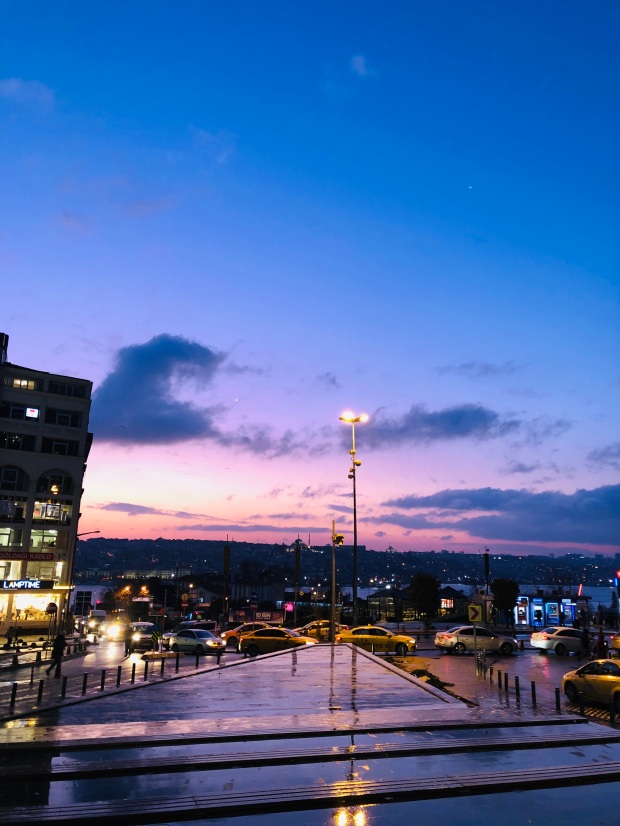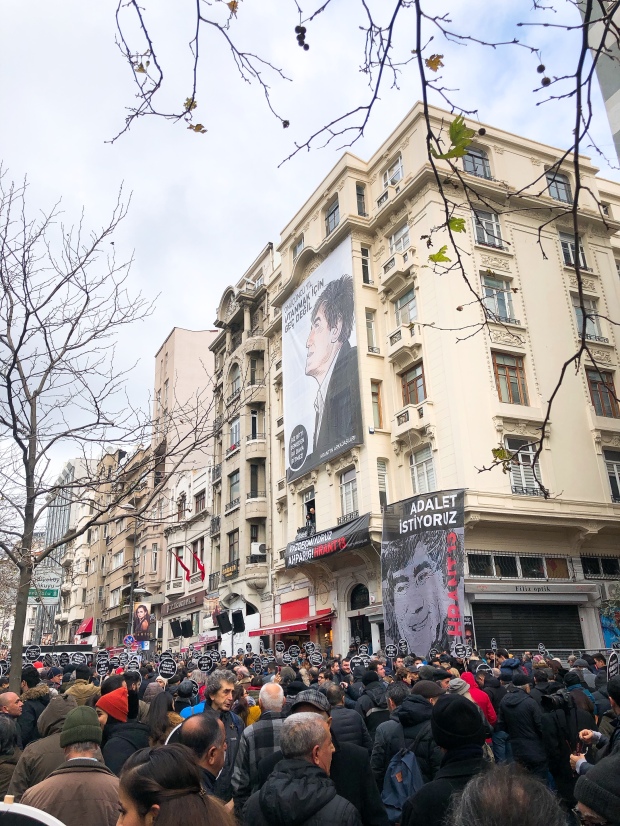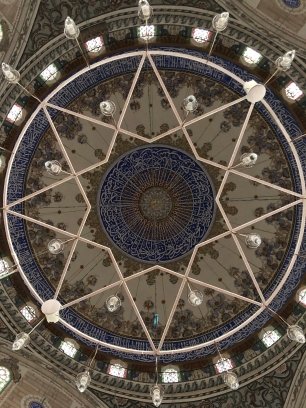Note: Thank you to Harvard’s Center for Middle Eastern Studies (CMES) and to our phenomenal trip leader Jesse for the chance to spend two weeks of my winter break in Turkey. Harvard kids, apply!!! Check out the program here.

***
The cypress and plane trees, the rooftops, the heartache of dusk, the sounds coming from the neighborhood below, the calls of hawkers and the cries of children playing in mosque courtyards mingled in my head and announced emphatically that, hereafter, I wouldn’t be able to live anywhere but in their city.
My Name Is Red, Orhan Pamuk
Funny how all you need is a novel to throw you back into the feeling that a city gave you. Memory isn’t too reliable now that I’m sitting on my bed in Cambridge trying to recollect the city from the glimpses and fragments on my phone camera roll. And Orhan Pamuk’s My Name Is Red.
Istanbul has to be seen from up above — the balcony of the Galata Tower, the mountaintop views at the Pierre Loti Café, on the cable car from the waterside at Eyüp. After the ascent, or during, there’s a breathtaking moment where your eyes drink in the three peninsulas: on one side, Asia, the other, Europe, and then the historical side with a skyline of minarets, domes, coastal villas, electric lines.

As I type this post, pausing ever so often, I am casually flipping through the dog-eared pages of My Name Is Red, which has traveled with me from Istanbul to Singapore to Cambridge — I started reading it on the rocking ferry across the Golden Horn and finished it on the red-eye flight from Istanbul to Singapore. Even a continent away, now, the pages still immediately engulf me in the chill and mystery of winding streets; the sheets of rain tickling a Bosphorus that has seen far too many conquerors and armies on its banks; the incredible awe that leaden domes, cypress trees, stone walls, minaret towers inspire at first sight; the bitter burn of çayı (tea) when gulped down too fast; the clink of teaspoons against the curve of the glass; the sound and fury of lives past; the romance of Istanbul.
Words, photos, and memories coalesce.
I think of sensory vignettes. The meat and onion-filled manti (dumplings) with a generous scoop of yogurt, topped off with a sprinkling of red pepper flakes. Striking blue tiles. Ornate stalactite patterns. Golden pyramids of baklavas. Cigarette butts on the floor, embers glowing. A hint of fog, always. The heartache of dusk dissipated by the fluorescent glow of the streetlamp. The city is, to the eye, a painting.

I, Istanbul, the city sings and intones. A first-person proclamation that asserts its undisputed character amidst modernization.
But Istanbul is so hard to unravel. History assaults you on the streets, so saturated that it seeps in through your soles with all its layers and contradictions. Once the epicenter of Christendom and then the heart of the Muslim caliphate when conquered by Mehmed II in 1453, Constantinople was the seat of the Sultan till 1923 — the year the Turkish Republic was founded. The modern republic was for Turks, an ethnic-driven nationalism that would erase and stifle the breathing space even further (after the 1915 Armenian genocide) for the minorities.
Who gets to define who counts as a citizen? In our two weeks there, we saw Greek schools and Orthodox churches, Armenian foundations, Syrian and Iranian restaurants. What is Turkishness if these people have all lived on this piece of land for centuries, through the rise and fall of three empires? What is it like to grow up in a state where you don’t officially belong and yet its lands are all that you’ve known?
On January 19th, 2020, I attended the first protest in my life, commemorating Hrant Dink’s assassination 13 years ago outside what was once the offices of the Armenian weekly Agos and now Hrant Dink’s site of memory. People held placards that read “Shoulder to shoulder against fascism” and “We are all Hrant. We are all Armenian.” A Turkish journalist of Armenian heritage, Dink fought for minority rights in a country where such causes counted as violating Article 301 of the Turkish penal code (penalizing remarks against the state or insults against Turkishness).
If there’s one place I recommend that you visit in Istanbul apart from Hagia Sophia, it would be the Site of Memory. I knew nothing about the man before visiting but was moved by his fiery sense of justice and bold crusade for his beliefs. His words would eventually cost him his life, but I walked away realizing that ideas are bulletproof. They live on.
May my pen too never falter.

Istanbul, Constantinople, Byzantium, call you by whatever name:
Be a book on the palm of my hand,
let me run my fingers over your ridges,
your weathered pages,
blemished margins,
the ink illegible,
in a font of sorrow,
a palimpsest of empires and histories,
layer upon layer,
teach me how to read you.
Good night x



One thought on “I, Istanbul”